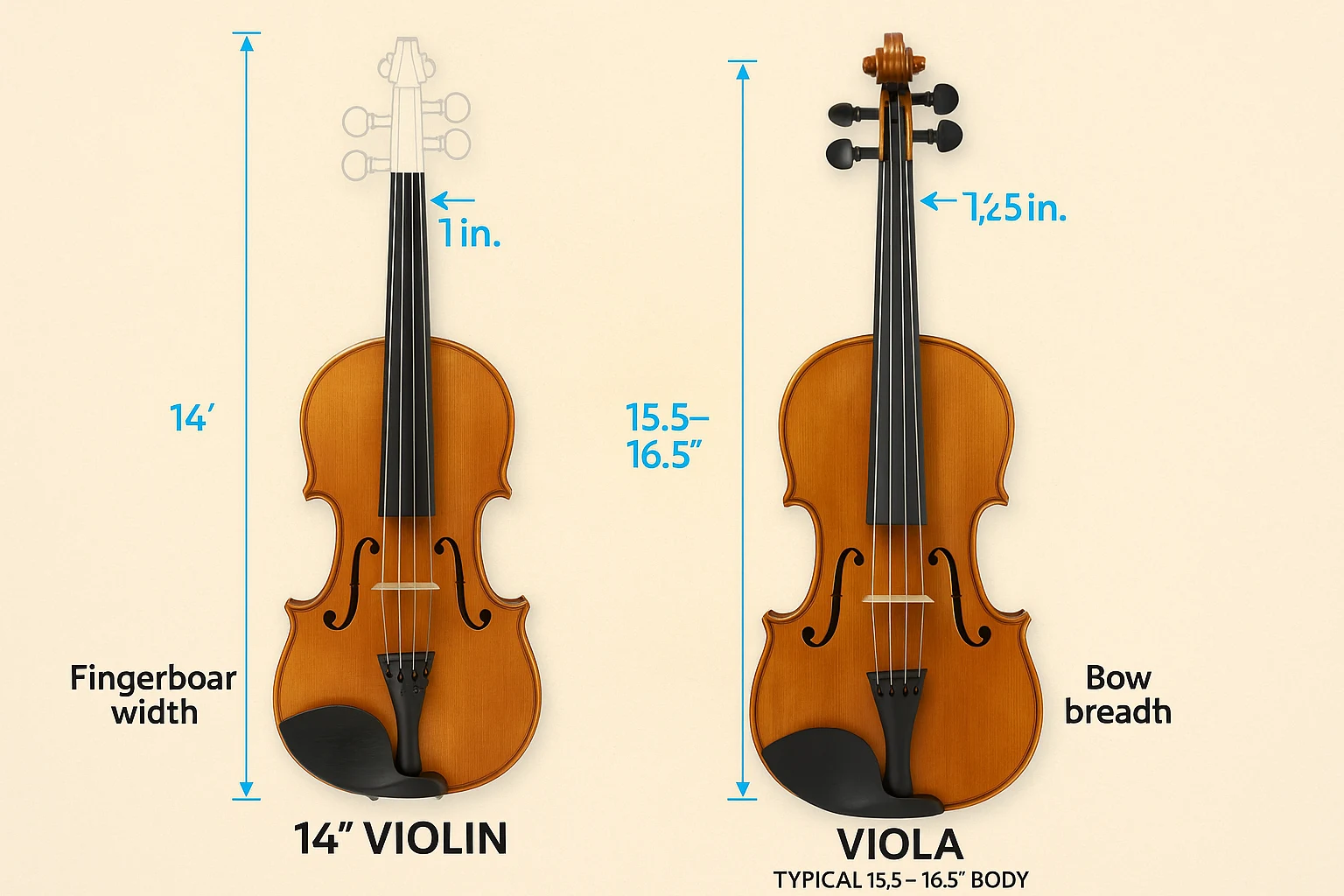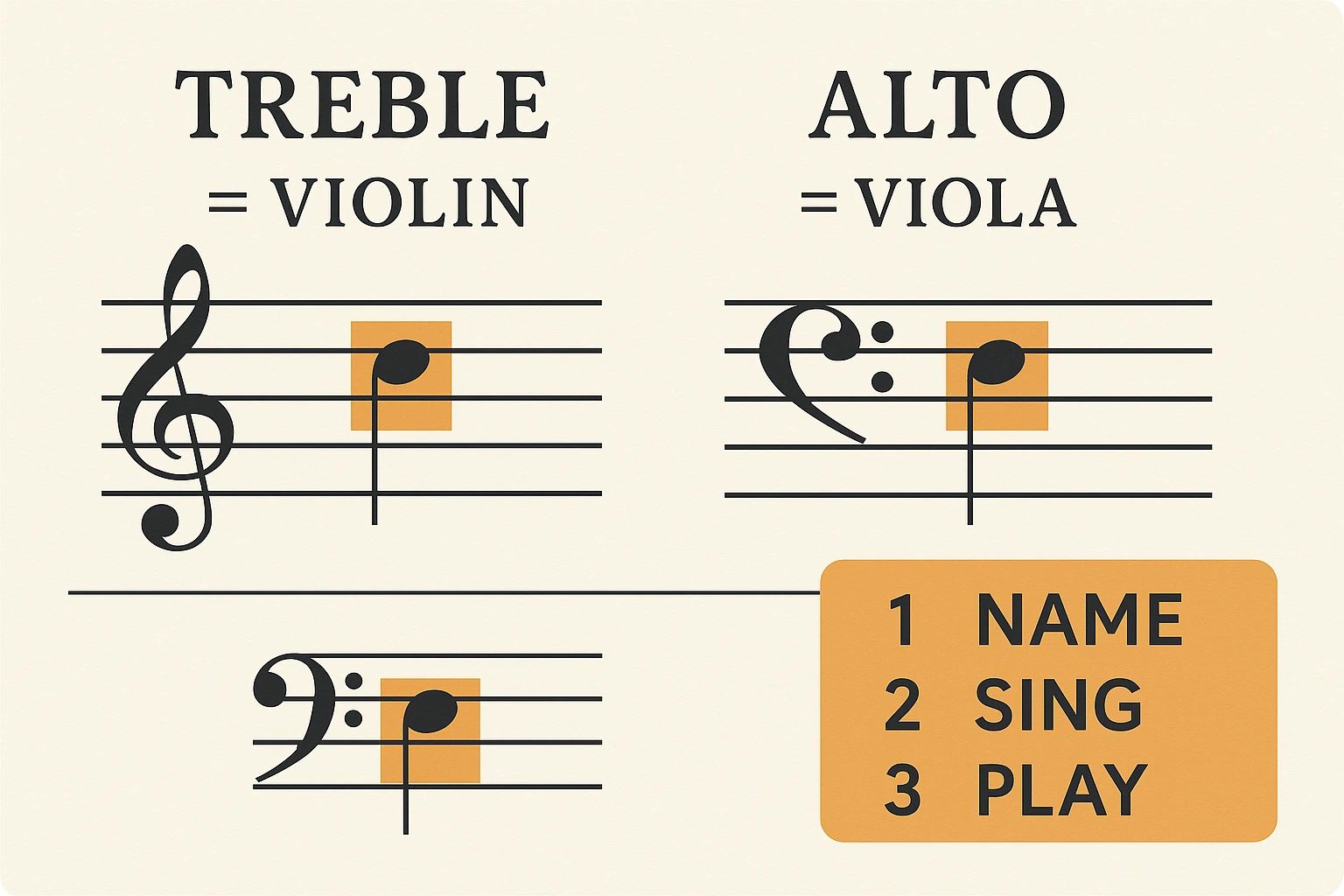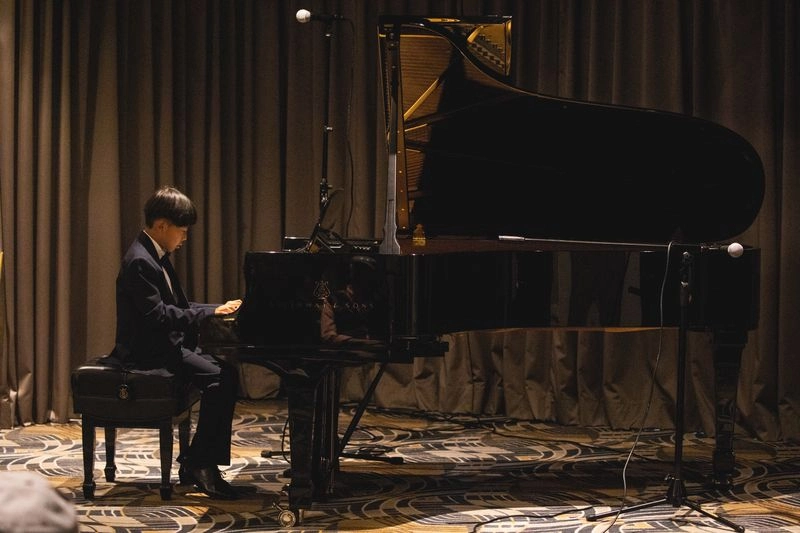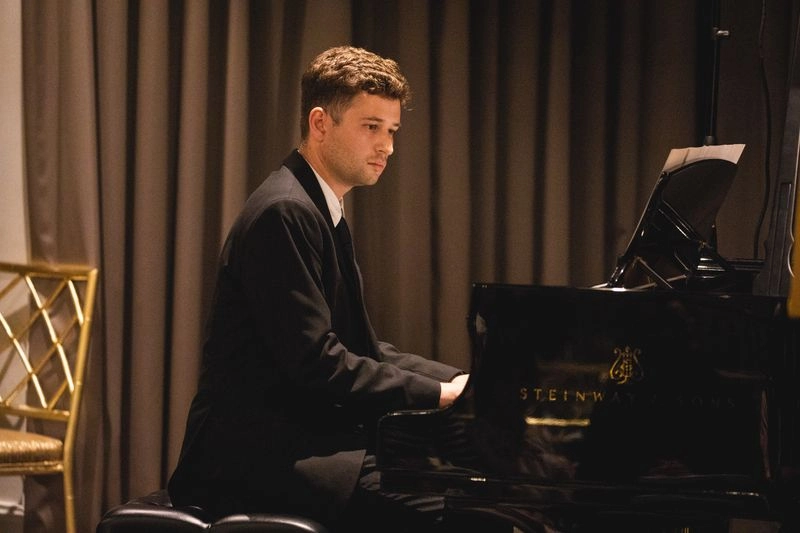Your answer in 1 paragraph. A fiddle and a violin are the same instrument played in different styles; the viola is the violin’s deeper-voiced sibling, tuned a fifth lower.
Don’t worry, we shall go deeper. If you’re googling fiddle vs violin or violin vs viola because your child lights up at bluegrass jams in Griffith Park or you, an adult beginner, want a mellow, cinematic tone for studio sessions in Burbank, here’s the fast truth.
“Fiddle vs violin” is a style question; “violin vs viola” is an instrument question. Pick the voice that matches your musical goals.
The one-minute answer (then we go deep)
- Fiddle = Violin: Same four-string instrument (G-D-A-E). “Fiddle” usually means folk/bluegrass/Celtic techniques; players often choose steel strings, sometimes a slightly flatter bridge, and may add pickups.
- Viola ≠ Violin: Bigger body, tuned C-G-D-A (a fifth lower), thicker strings, heavier bow; reads alto clef; darker, earthier tone; demands wider finger spacing and more arm weight.
.webp)
Violin vs Fiddle: What’s actually the difference between a “fiddle” and a “violin”?
Bottom line: None, physically, unless the player tweaks setup for their style. Most “differences” live in repertoire and technique:
- Setup choices common in fiddling: steel-core strings for snap and projection; occasionally a flatter bridge for faster double-stops; clip-on pickups for amplification.
- Playing approach: more grooves, ornaments, improvisation, and “chord rolls” vs. classical emphasis on blending, vibrato variety, and precise articulation.
Choose your style: If your heart says porch jams at the Original Farmers Market or Irish sessions in Santa Monica, start violin lessons, but tell your teacher you want fiddle style. You can set up the same instrument for that sound and teach bow rhythms early.
Viola vs Violin: How the viola differs from the violin (and who tends to love it)
The viola is a different instrument: larger body, lower tuning (C-G-D-A), wider fingerboard, thicker strings, heavier bow. Think “alto voice” vs. the violin’s “soprano.” You’ll read alto clef for most parts.
Expect a darker, rounder tone and a different physical feel (more left-hand stretch, more right-arm weight).
Why students pick viola:
- Tone personality: “rustic, earthy” low C; lush inner harmonies in orchestra and film scores.
- Demand: School and youth orchestras in LA always need good violists—faster ensemble placements for committed beginners.
- Comfort (not as delicate, greater margin for error, good size mid-point bw cello and violin, better for less fine-tune detailing, more comfortable for someone bigger)
What to expect physically: Wider stretches (especially 3rd–5th position), slower string response, and bigger vibrato oscillation; you’ll learn to use arm weight (not pressure) to avoid scratches.


Quick Comparison
“Which one should I start with?” (decision paths for parents & adult students)
For parents (practical):
- Try-on fit first. If your 9–12-year-old is slight of build or sensitive to arm fatigue, start violin. If they love lower sounds and aren’t bothered by a roomier hold, consider viola with a careful size fit. (Your teacher will assess shoulder flexibility and left-hand span.
- Repertoire match. Does your child binge Lindsey Stirling, Irish reels, or country? Start violin and flag fiddle style early. Loves the deep film-score inner voices? Viola might be perfect.
- School ensemble reality in LA: More chair openings for violas in middle/high-school programs. Translation: faster wins, more motivation.
For adult beginners (no fluff):
- Pick by sound + lifestyle. If you practice late nights in an apartment, you’ll want a mute either way. If you love Americana/folk or plan open mics on the Eastside, violin (fiddle style) gets you there fastest. If you’re drawn to rich, introspective tones for chamber meetups, viola is the vibe.
string family - Body mechanics check. Shoulder/neck tightness? Start violin; build mobility before considering viola’s added weight and reach. If you’re taller with longer fingers, viola can feel surprisingly natural.
What every beginner should know about strings, bridges, and setup
Strings:
- Classical violin often uses synthetic or gut for color and nuance; fiddle players frequently choose steel for clarity and punch.
- Viola strings are thicker and respond more slowly. Plan for patient bow starts.
string family
Bridges:
- Standard arched bridge = clean single-string accuracy (classical).
- Slightly flatter bridge = faster double-stops/chord rolls (fiddle), but requires control to avoid accidental string contact.
Pickups & amps (LA reality): If you’re playing amplified sets (venues from The Mint to street festivals), a piezo pickup on a violin/fiddle is common; talk to your teacher about feedback control and EQ basics before your first gig.
How each one feels to play?
The violin (aka fiddle when you play fiddle music) feels like a zippy sports car; the viola is a comfy SUV with torque. Both go fast. They just accelerate differently.
- Violin / Fiddle: lighter, quicker string response, smaller left-hand stretches, and “laser” focus up high. If you like fast melodies, hooks, and taking the spotlight, this is your candy.
- Viola: deeper voice, slightly slower to speak (thicker strings), wider finger spacing. If you love harmonies, film-score warmth, or being the glue in ensemble music, you’ll smile here.
Try this at your first lesson (2 minutes):
- Play open strings slowly, counting “1-2-3-4.” Notice how the violin jumps out; notice how the viola “blooms.”
- Roll a two-note chord (G+D on violin, C+G on viola). Which resonance feels like you?
Reading music without tears (treble vs. alto clef)
Violins (and fiddles) read treble clef. Violas mostly read alto clef. Treble puts the party up high; alto centers the map around middle C, great for the viola’s range.
- If you already read treble (singers, guitarists, pianists): violin/fiddle will feel familiar on day one.
- If you love puzzles: learning alto clef is a two-week hump, not Mount Everest. Use the anchor trick: the middle line in alto = C. Build outward from that landmark.

Styles you can play (and where in LA to hear them)
Your instrument doesn’t lock you into a genre. Your setup, teacher, and interests do.
- Violin / Fiddle: bluegrass jams (check Irish sessions in Santa Monica), Americana at small venues, film/TV session work (Burbank/NoHo), worship gigs, string quartets, and classical orchestras.
- Viola: chamber groups (Westside/DTLA scene), youth and community orchestras hungry for inner voices, studio pads for composers who crave that low-C color.
Common FAQs (compiled from top searches & student questions)
Is a fiddle different from a violin?
No. Same instrument. “Fiddle” = style/repertoire and sometimes a slightly tweaked setup (steel strings, flatter bridge, pickups).
Is viola harder than violin?
Different hard. Viola needs more arm weight and wider stretches; violin demands precision up high and quick response. Pick the sound you love—motivation beats micro-differences every time.
Can I start on viola as a beginner?
Yes. If you adore the lower, warmer voice, start there. Just size carefully and expect an extra week of settling into the bigger feel.
How soon can I learn songs I know?
Week 1–2: simple tunes on open strings and first fingers. Month 1–2: full melodies with basic bowing. Add ornaments/groove (fiddle) or vibrato building blocks (classical) as we go.
What about hand size or shoulder pain?
Small hands do fine on violin; tall students often love viola. Either way, correct setup > brute force. Shoulder rests and posture tweaks fix 80% of comfort issues.
Do I need private violin lessons or can I do violin classes near me?
Private lessons accelerate feedback and fit busy adult schedules. Group violin classes for adults or violin classes for kids add community and motivation. Many families do a mix.
Switching paths later (violin ↔ viola) without the identity crisis
Bottom line: You can switch. Musicians do it all the time—new ensemble, new role, same musical brain.
- Violin → Viola: Expect 2–4 weeks to feel comfy with alto clef and the wider finger spacing. Keep the same daily routine, but slow down bow starts and let the thicker strings “bloom.”
- Viola → Violin: The left hand feels suddenly tiny. Focus on intonation up high and lighter bow weight so you don’t overdrive the E string.
- Keep both? Totally fine. Many LA freelancers carry both for sessions. Label cases clearly and run a two-minute “clef reset” before you start.
Your Next Step
If you’re still weighing fiddle vs violin and violin vs viola, here’s the cleanest way to decide: book a 30-minute session, play two open-string chords, and notice which sound makes your shoulders drop and your brain say okay, this is me.
That instrument is the one you’ll practice. And practice is the whole game. Whether you chase reels on a “violin vs fiddle” path or sink into that low-C glow, we’ll meet you where you are, with clear checklists, tiny wins, and the right setup.
If you’re in LA and are looking for violin classes, Angeles Academy of Music is the best music school in Los Angeles for violin lessons for beginners, adults, kids... anyone.
And yes, bring that list of all your questions. We’ll answer them in the first lesson and get you playing by Friday.
.svg)
.svg)
.svg)
.svg)
.svg)
.svg)





.svg)